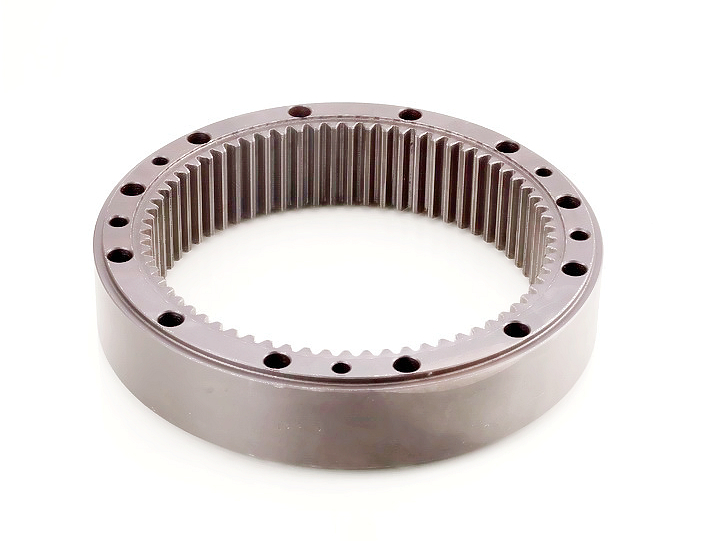The Role of Deep Hole Drilling in Nuclear Industry Components: A Case Study
Precision Engineering for Extreme Environments
Nuclear power components operate under unprecedented conditions—temperatures exceeding 600°C, neutron irradiation, and pressures over 15 MPa. Deep hole drilling is critical for manufacturing reactor control rod channels, coolant passages, and instrumentation ports with tolerances tighter than ±0.01mm. Multi-axis deep hole drilling services enable the production of Inconel 718 control rod guide tubes with L/D ratios of 50:1, ensuring alignment accuracy within 0.005mm/m to prevent neutron flux distortion.
The transition to Generation IV reactors demands materials like Zircaloy-4 for fuel cladding, requiring specialized drilling techniques to avoid hydride formation. Combined with electropolishing, these processes achieve surface finishes below Ra 0.2μm, minimizing corrosion risks in high-purity water environments.
Material Selection: Balancing Radiation Resistance and Machinability
Material | Key Metrics | Nuclear Applications | Limitations |
|---|---|---|---|
1,300 MPa UTS @650°C, 35 HRC (aged) | Control rod drive mechanisms | Requires cryogenic drilling (<150°C) to prevent work hardening | |
485 MPa YS, 40% elongation (annealed) | Reactor coolant system piping | Sensitization risk in 450-850°C range | |
500 MPa UTS, low thermal neutron cross-section | Fuel rod cladding | Prone to hydride embrittlement if drilled above 300°C | |
550 MPa YS, Charny V-notch ≥100J @-20°C | Reactor pressure vessel penetrations | Requires post-weld heat treatment (PWHT) |
Material Selection Protocol
Reactor Core Components
Rationale: Inconel 718’s 1,300 MPa tensile strength at 650°C ensures control rod stability under neutron flux. Post-drilling gas nitriding achieves 60 HRC surface hardness, extending service life to 60+ years.
Validation: ASME III Appendix XXIII confirms <0.1% dimensional change after 10⁴ thermal cycles.
Fuel Assembly Systems
Logic: Zircaloy-4’s low thermal neutron absorption (0.18 barns) requires drilling in argon-shielded environments to prevent oxidation. Laser-assisted drilling maintains hole straightness within 0.01mm/m.
Coolant Systems
Strategy: 316L stainless steel’s corrosion resistance is enhanced via electropolishing, reducing biofilm adhesion by 80% in borated water.
CNC Drilling Process Innovations
Process | Technical Specifications | Applications | Advantages |
|---|---|---|---|
Ø20-300mm, 0.02mm/m straightness, 500 psi coolant | Reactor vessel penetrations | Achieves 50:1 L/D ratios in SA-508 steel | |
Ø3-25mm, 0.005mm circularity, 1,000 RPM | Instrumentation ports in Zircaloy-4 | Minimizes heat input to <100°C | |
Ø0.5-3mm, zero recast layer, 0.002mm taper | Cooling channels in Inconel 718 | Eliminates microcracks in irradiated materials | |
Ø5-50mm, ±0.01mm hole position, 1 kW fiber laser | Steam generator tube sheets | No tool wear; 10x faster than mechanical drilling |
Case Study: Control Rod Guide Tube Manufacturing
Component: Westinghouse AP1000 Control Rod Guide Tube
Material: Inconel 718 (AMS 5662)
Drilling Process: BTA drilling Ø15mm × 750mm (L/D 50:1)
Parameters:
Spindle Speed: 800 RPM
Feed Rate: 0.08 mm/rev
Coolant: Synthetic oil (ISO VG 32), 300 psi
Result:
Straightness: 0.007mm/m (ASME Y14.5)
Surface Finish: Ra 0.4μm (ASME B46.1)
Cycle Time: 2.5 hours/tube
Surface Engineering: Mitigating Degradation Mechanisms
Treatment | Technical Parameters | Nuclear Benefits | Standards |
|---|---|---|---|
50μm thickness, 0.12 CoF, <5% porosity | Reduces control rod stiction | ASTM B733 | |
0.2mm case depth, 1,100 HV, <2% white layer | Enhances wear resistance in coolant pumps | ISO 9001:2015 | |
300μm thickness, 1,400 HV30, <1% porosity | Erosion protection in feedwater nozzles | ASTM C633 | |
Nitric acid 20%, 30min immersion, <0.5μg/cm² iron | Ensures ASTM A967 compliance for 316L | NQA-1-2015 |
Coating Selection Logic
Reactor Internals: Plasma nitriding extends the lifespan of Inconel 718 springs by 3x under 10⁸ Gy gamma irradiation.
Primary Coolant Loops: Electroless Ni-PTFE reduces pump seal wear by 60% in 300°C water.
Containment Systems: WC-CoCr coatings withstand 200 m/s steam erosion in LOCA scenarios.
Quality Control: Nuclear-Grade Validation
Stage | Critical Parameters | Methodology | Equipment | Standards |
|---|---|---|---|---|
Material Certification | Traceability to ASTM/EN standards | OES analysis, Charpy impact testing | SPECTROMAXx, Instron 9340 | ASME II Part A |
Dimensional Inspection | Bore straightness ±0.005mm/m | Laser-guided CMM | Hexagon Leitz Infinity | ASME Y14.5-2018 |
NDT | Ultrasonic testing (≥1mm flaw detection) | Phased array UT with 10 MHz probes | Olympus Omniscan MX2 | ASME V Article 4 |
Leak Testing | Helium leak rate <1×10⁻⁹ mbar·L/s | Mass spectrometer leak detection | Leybold Phoenix L300i | ISO 20485 |
Certifications:
ASME NQA-1: Quality assurance for nuclear facilities.
ISO 19443: Radiation hardness validation.
Industry Applications
Reactor Pressure Vessels: SA-508 Gr.3 steel with BTA-drilled Ø250mm × 12m coolant channels.
Fuel Rod Cladding: Zircaloy-4 tubes with laser-trepanned Ø1.2mm holes (Ra 0.1μm).
Control Rod Drives: Inconel 718 guide tubes with electro stream-drilled Ø2mm instrumentation ports.
Conclusion
Precision deep hole drilling services ensure nuclear components meet ASME III and ISO 19443 requirements, achieving 0.005mm/m alignment accuracy in extreme environments. Our ASME NQA-1 certified processes guarantee compliance from prototype to decommissioning.
FAQ
Why is BTA drilling preferred for reactor vessel penetrations?
How does electropolishing enhance corrosion resistance in PWRs?
What standards govern Zircaloy-4 machining?
Can laser drilling prevent hydride formation in zirconium alloys?
How to validate neutron irradiation resistance in coatings?

